Using the Internet and mobile health apps are as mainstream as swiping left for a date and researching features in a new car, based on the Digital 2023 Global Overview Report from Meltwater.
The broad coverage of this kind of research can’t be accomplished by just one entity, and Meltwater acknowledges the partners who brought them to this research-party: these included data.ai, GSMA Intelligence, GWI, Locowise, Ookla, PPRO, SemRush, Similarweb, Skai, and Statista.
In this 400+ page report, you can find most datapoints you’re interested in covering the global consumers’ use of the internet, mobile apps, and social media. I combed through the huge report to uncover key information addressing digital health, fitness, and the internet as search sandbox. Here are a few highlights that paint our picture as digital health gone mainstream and Main Street. Note that these data are mostly global and not US or other nation-specific unless otherwise detailed.
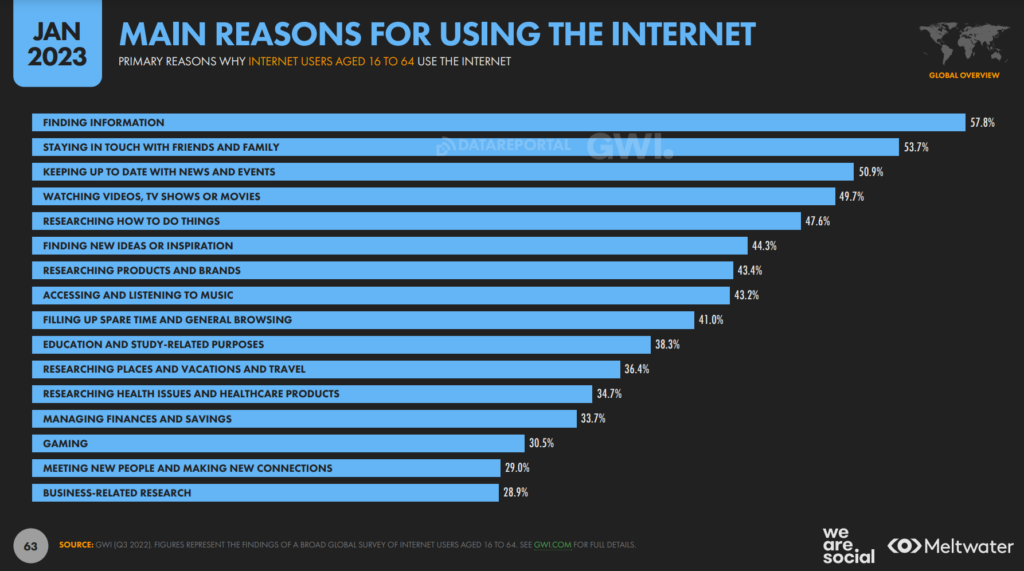
The primary reasons most people between 16 and 64 years of age use the internet are to find information in general, to stay in touch with friends and family, to keep up with news and events, and for one-half of consumers, to watch videos and entertainment.
Researching health issues and health care products is a key reason to use the internet for about one-third of consumers globally, about the same number of folks going to the internet for education, travel and vacation research, and managing finances and savings.
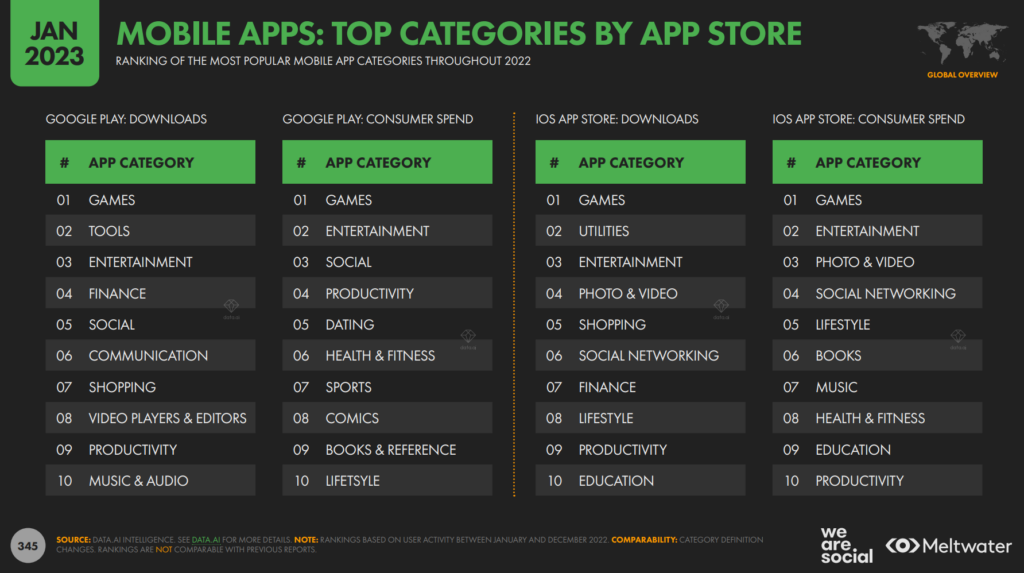
By category, health and fitness mobile apps fall between dating and sports apps for consumers downloading and paying for mobile apps via Google Play. In the IOS app store, health and fitness download spend falls between music and education apps categories, shown in the second chart. Games and entertainment rank tops in spend for both Google Play and IOS using consumers.
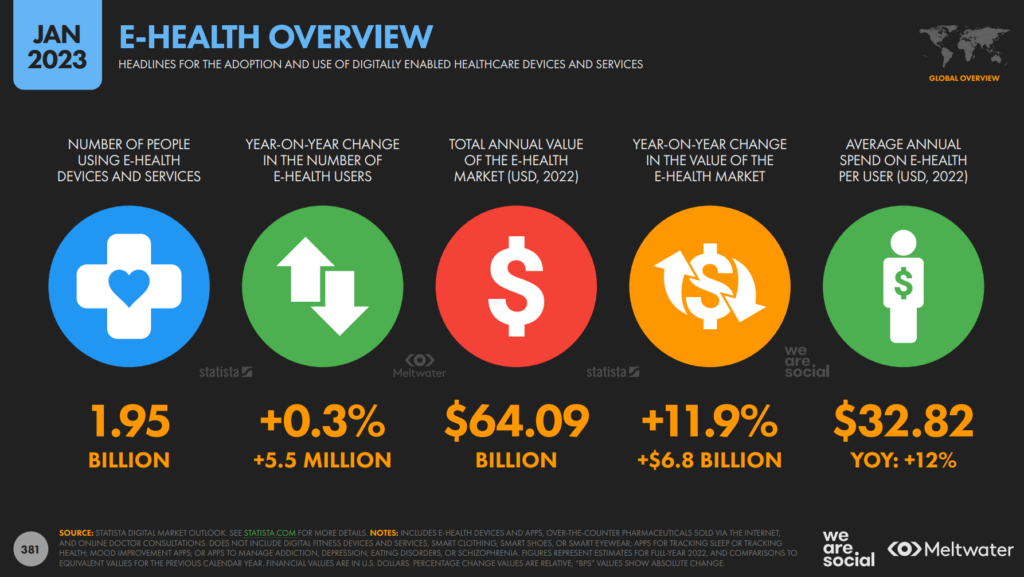
E-health in this report is defined as the adoption and use of digitally enabled healthcare devices and services. Globally, nearly 2 billion consumers used e-health devices and services as of January 2023, up by nearly 12% for revenue approaching $7 bn (US dollars, global demand). Per user, this equated to about $33, growing year-on-year at 12%.
The report also breaks out digital fitness and well-being, where average per person spend was relatively flat at $64 but market segment growth increasing over 7%.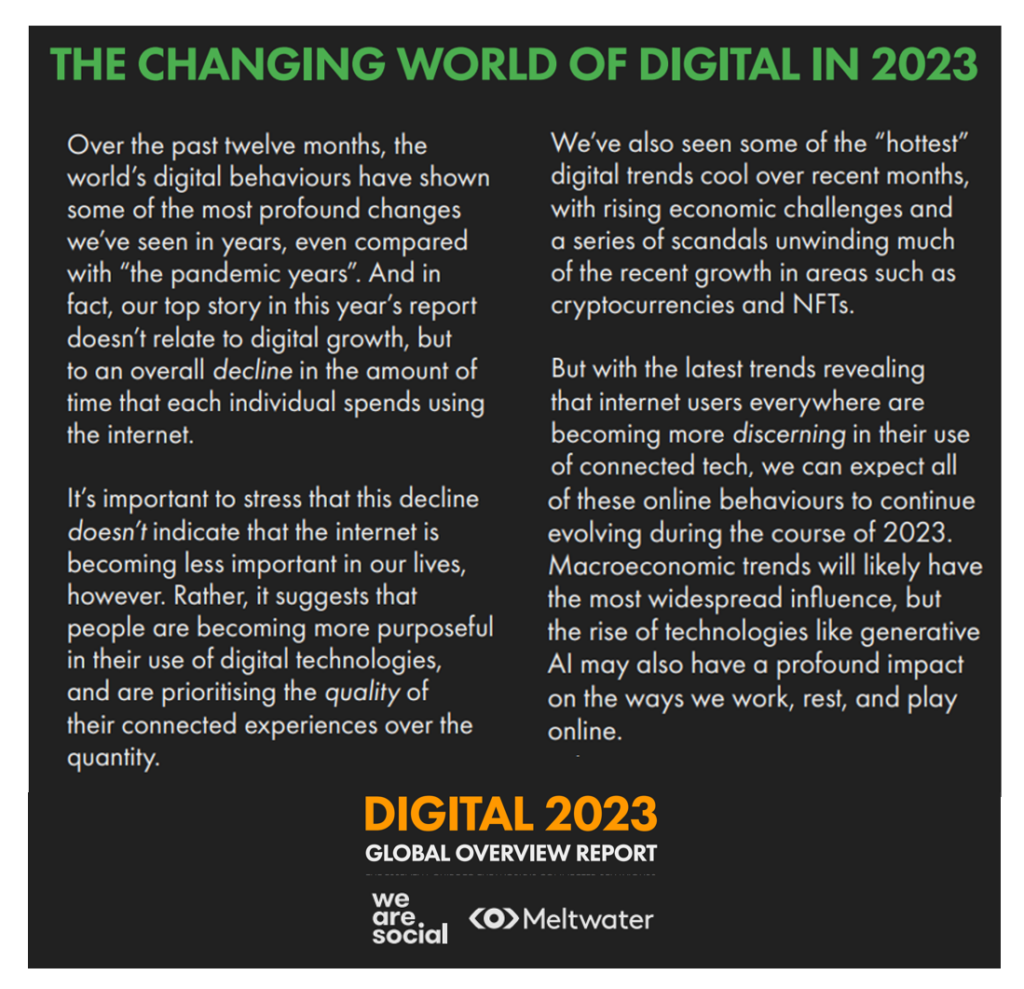
Health Populi’s Hot Points: “Digital behaviours have shown some of the most profound changes we’ve seen in years, even compared with ‘the pandemic years,'” the start of the report asserts, quoted in the box here from the report’s introduction.
But importantly, we learn that consumers’ use of the internet is maturing in that “people are becoming more purposeful in their use of digital technologies, and are prioritising the quality of their connected experiences over the quantity.”
With consumers’ spending growing 12% per person for e-Health devices and services, it’s clear that the post-pandemic consumer, globally, is also a digital health consumer. We’ve seen a lens on this recently via data from the Consumer Technology Association,
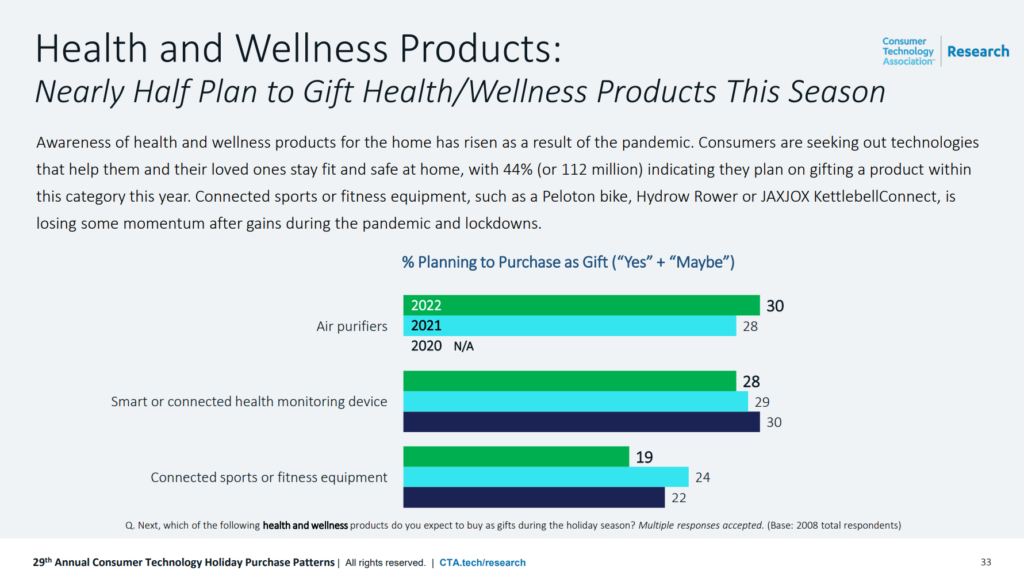
Nearly 3 years after the start of the COVID-19 pandemic, nearly one-half of U.S. consumers was shopping in the 2022 winter holiday season for digital health and wellness products, whether smart/connected watches, health monitoring devices, air purifiers, or connected sports equipment, shown in this graphic from the CTA Holiday Purchase Patterns report.
In healthcare circles these days, we have begun to say that “telehealth is health.”
For consumers, increasingly, digital health is also just….health on a daily or ongoing/chronic basis.


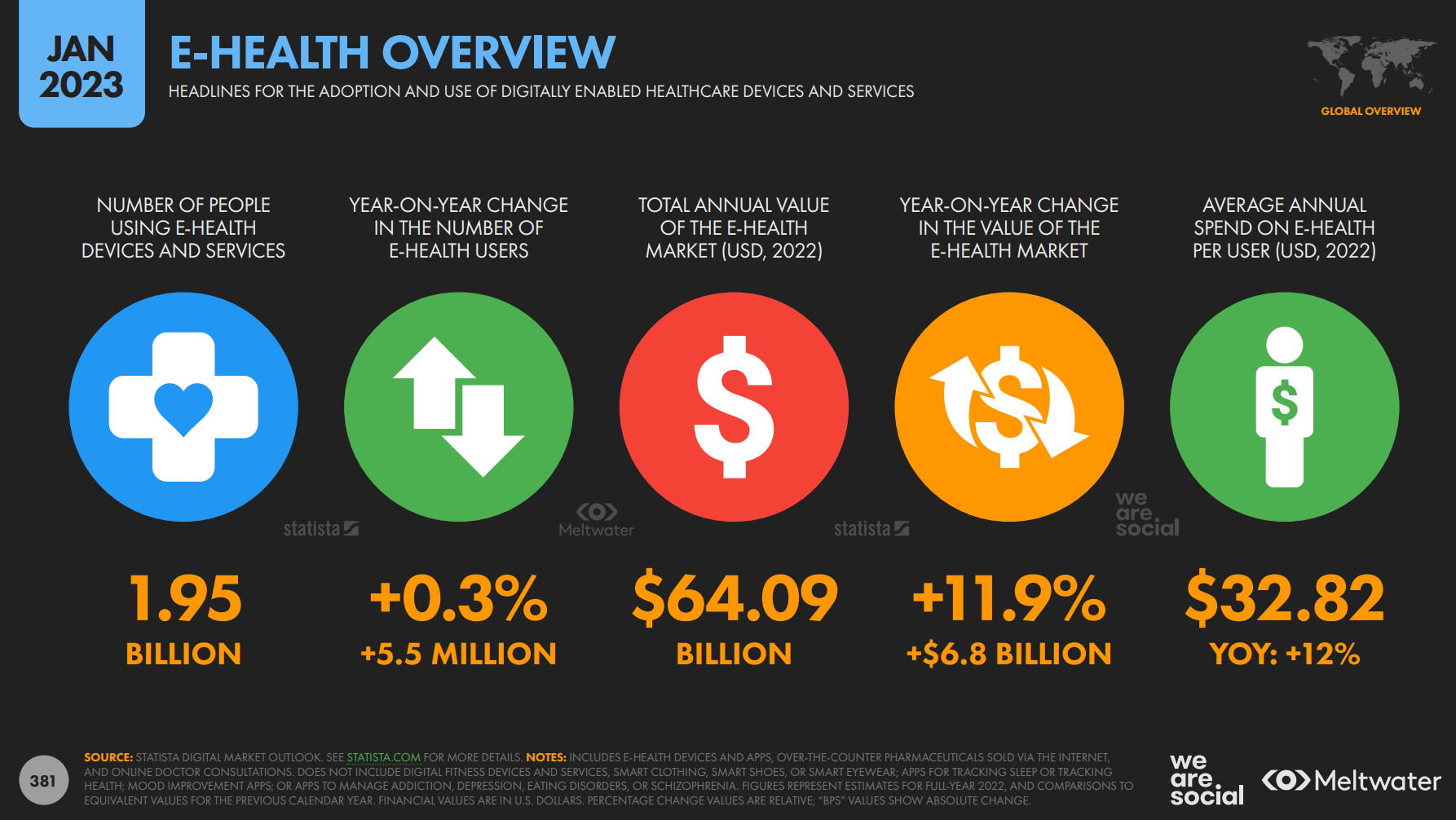


 Interviewed live on BNN Bloomberg (Canada) on the market for GLP-1 drugs for weight loss and their impact on both the health care system and consumer goods and services -- notably, food, nutrition, retail health, gyms, and other sectors.
Interviewed live on BNN Bloomberg (Canada) on the market for GLP-1 drugs for weight loss and their impact on both the health care system and consumer goods and services -- notably, food, nutrition, retail health, gyms, and other sectors. Thank you, Feedspot, for
Thank you, Feedspot, for  As you may know, I have been splitting work- and living-time between the U.S. and the E.U., most recently living in and working from Brussels. In the month of September 2024, I'll be splitting time between London and other parts of the U.K., and Italy where I'll be working with clients on consumer health, self-care and home care focused on food-as-medicine, digital health, business and scenario planning for the future...
As you may know, I have been splitting work- and living-time between the U.S. and the E.U., most recently living in and working from Brussels. In the month of September 2024, I'll be splitting time between London and other parts of the U.K., and Italy where I'll be working with clients on consumer health, self-care and home care focused on food-as-medicine, digital health, business and scenario planning for the future...